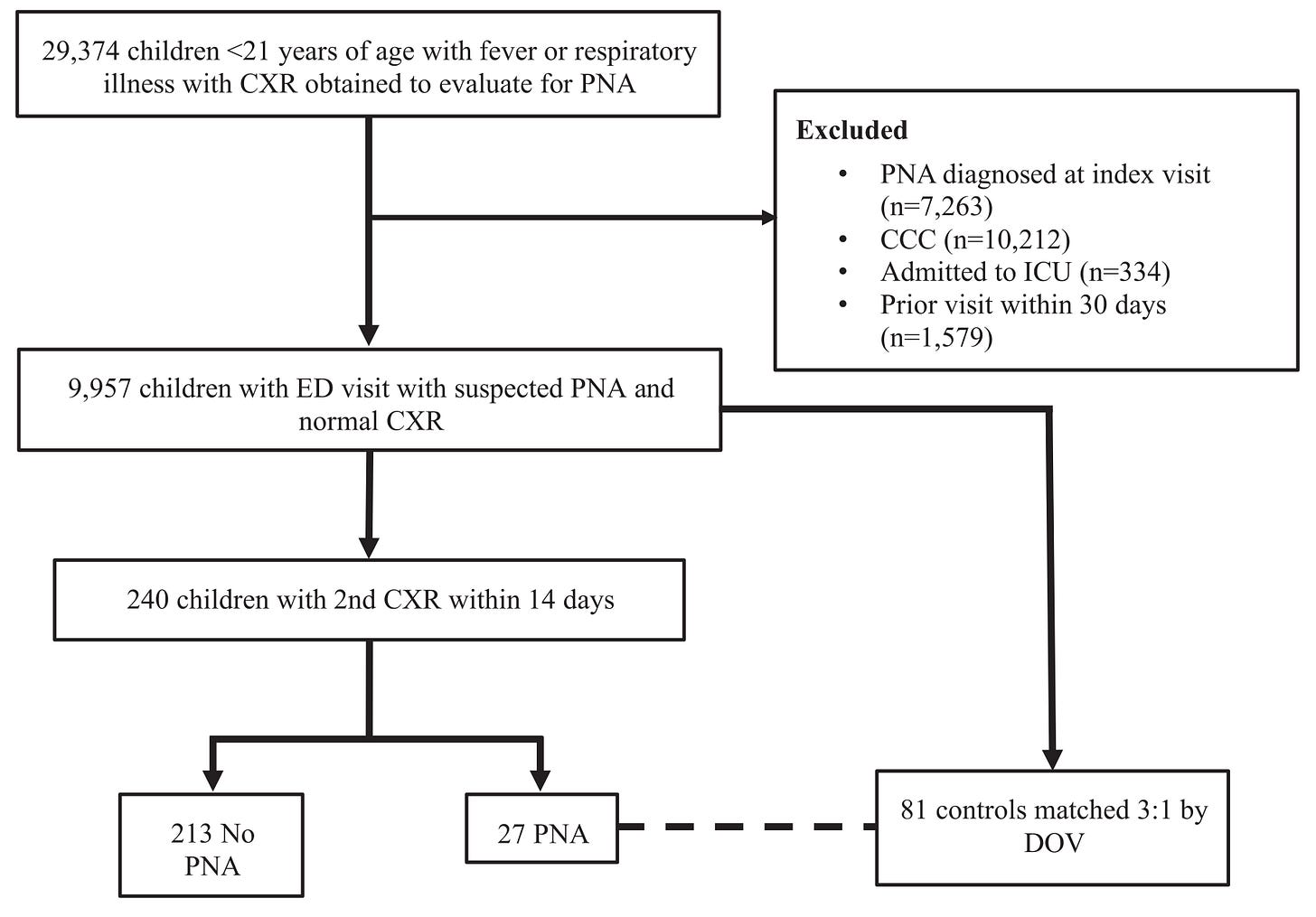This study is, effectively , inscrutable and puzzling – for so, so many reasons.
Ostensibly, these authors are framing these data to support “trust” in the appearance of a negative chest x-ray in pediatric patients in whom pneumonia is suspected. The key numbers are in their CONSORT flow diagram:
What the authors focus on is: look! Only 27 cases of pneumonia developed from the original 9,957 children with initially normal CXRs. That’s only 0.27%. It’s safe to trust a negative CXR.
This is “yes” and “no”. Clinical follow-up for development of radiographic pneumonia could only be performed in the convenience sample of patients visible in the EMR of their health system, so the rate observed here is the floor. Then, of the patients who were followed-up as their “DOV controls” not receiving a CXR within two weeks, 9% received antibiotics for an ostensibly non-pneumonia indication. Some of these patients could yet have been pneumonia, but coded otherwise based on associated findings from general illness apparent in an outpatient clinic. So, “no, you can’t trust it”, there could be more cases of missed pneumonia – which fits with the known sensitivity limitations of plain radiographs.
The “yes, you can trust it” is a much narrower (or wider, like, the entire U.S.) application – and that goes along with the negative predictive value. Specifically, it goes along with the insane over-utilization of chest radiography in their ED – in stark contrast to the IDSA Guidelines and practice patterns outside the U.S. – by specific design, as the authors relate. Their protocol for suspected pneumonia encourages radiography, which will obviously lead to over-diagnosis and over-treatment of viral ethologies. But, at the same time, yes, if a population of fundamentally well, minimal-risk children are all imaged – as appears to be the case, here – the incidence of true serious bacterial illness will be so low as to reinforce a stellar NPV for the CXR.
These data here are more a sign of broken medical culture than any signal the CXR is a useful tool.



